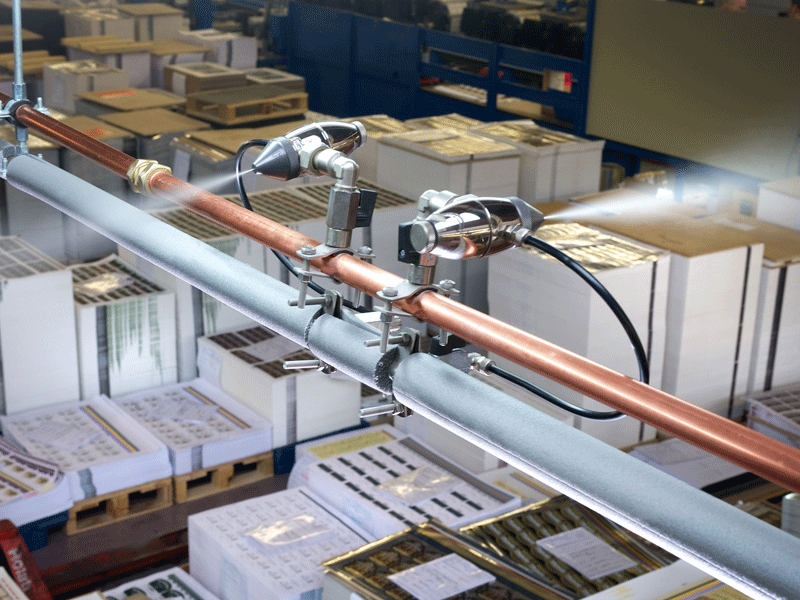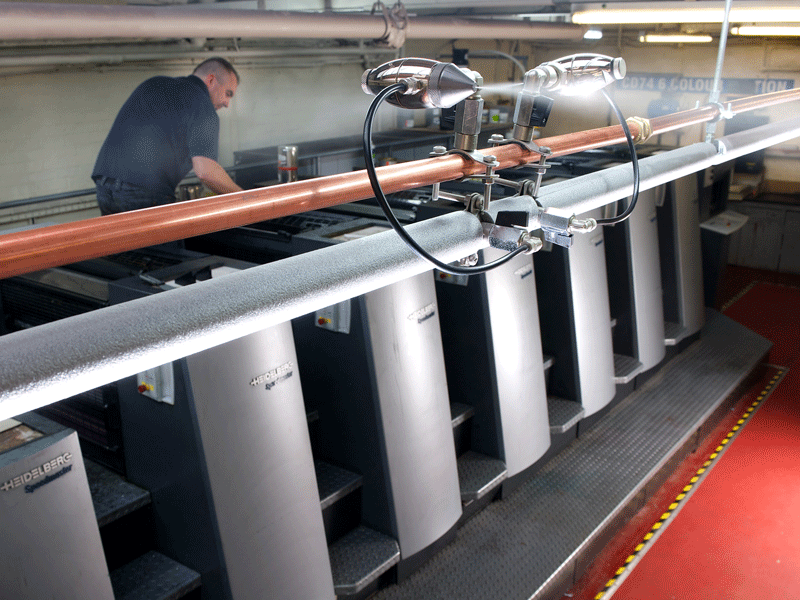23.11.2018
4 Ways to Reduce Static Electricity in Print Production
When it comes to folding machines and bindery equipment in printing applications, static electricity can be a pain — literally! Caused by a lack of proper humidity control and therefore drier conditions, it can pose a serious safety risk for employees and impact machine reliability. Today, we’ll go over some key ways you can reduce instances of electrostatic discharge in print production. Let’s get started.
Reduce the Amount of Conductive Material
It goes without saying that if there’s nowhere for static electricity to build, it won’t become powerful enough to arc to other conductive surfaces or individuals. Therefore, cutting out as much conductive material — literally, when it comes to carpeting — is an essential step to take. Rubberized floor mats at workstations, non-conductive guards on metal work surfaces and as little metal as possible can help, but you also need to be realistic — that bindery equipment can’t be covered in rubber! This is where our next tip comes in handy.
Maintain 40 to 60 Percent Relative Humidity (RH)
Proper humidity control is crucial in print production. Imbalanced relative humidity levels are the primary cause of electrostatic discharges. This is because moisture acts as a conductor of electricity and, if conditions are drier, there is an even greater risk of static electricity building up and arcing. No matter how much you attempt to reduce the amount of conductive material in a space, if the RH isn’t at an acceptable level, it won’t make much of any difference. If you don’t have a modern, high-efficiency industrial humidifier operating, now is the time to have one professionally installed.
Spread out Touch Points
Bear in mind that whenever two different materials touch, they can usually create static. Where there’s more activity, the current will become stronger. Therefore, another workaround to reduce instances of static shocks is to spread out print production equipment and workstations. Try to keep every machine a couple of inches apart and see if it helps — you just might be surprised at the results!
Pinpoint Causes with System Monitoring
One more way to address electrostatic discharge is to pinpoint such high-risk areas themselves. Get an engineer or two to inspect workstations, bindery equipment, folding machines and other systems to determine their conductivity and whether there is a risk of arcing. Then, work with your team to address these troublesome areas. Often, moving equipment around and treating high-risk areas with an efficient industrial humidifier makes enough of a difference.
There is no way to eliminate static electricity completely, but combined, proper humidity control and proactive measures such as these can make a tremendous difference. To help combat electrostatic discharge with one of our highly efficient industrial humidifiers, contact us at Condair for details!
Similar Links:
https://www.condair.com/humidifiers-for-printing


